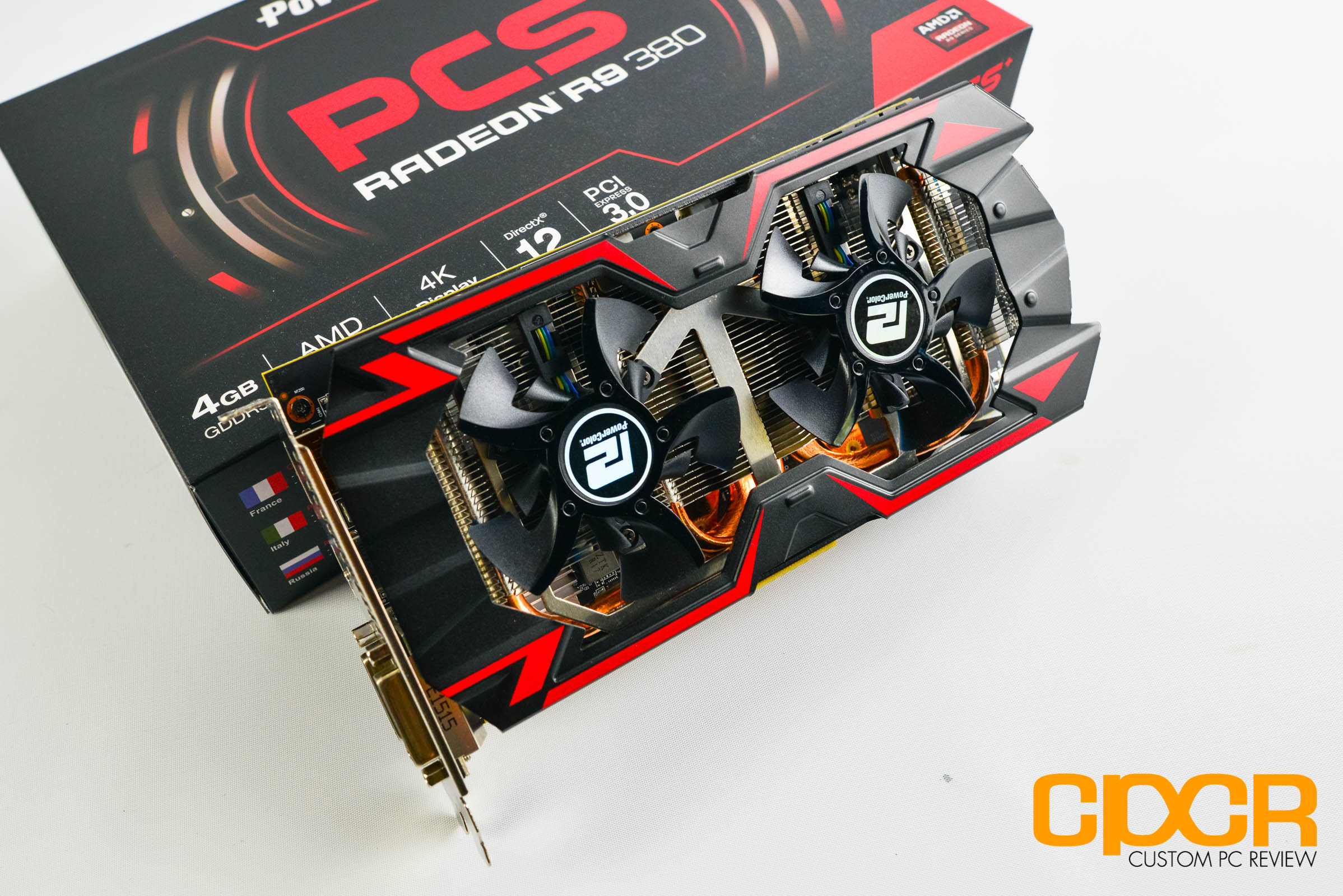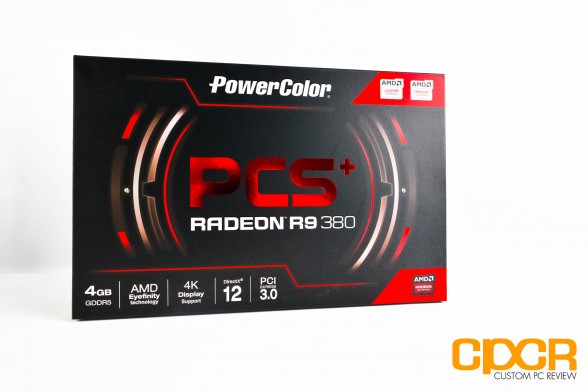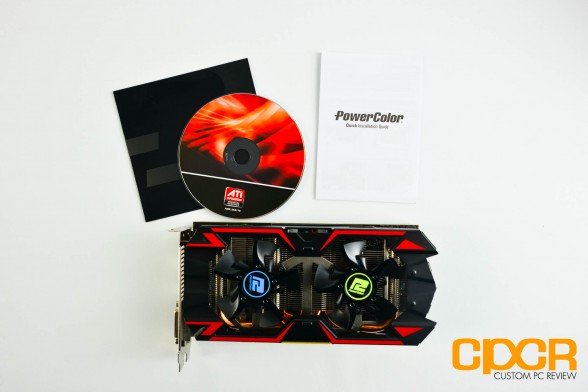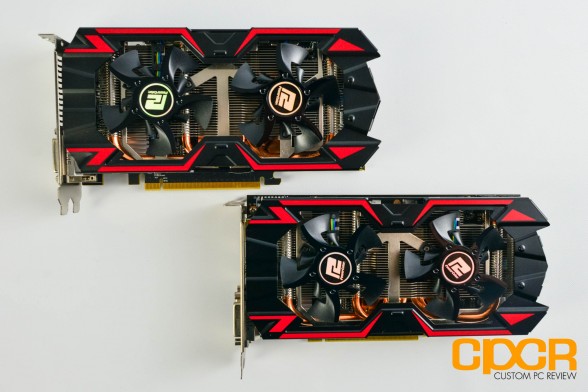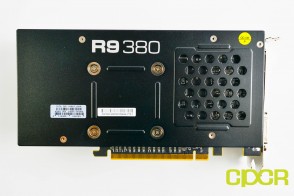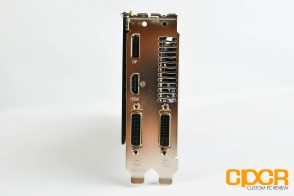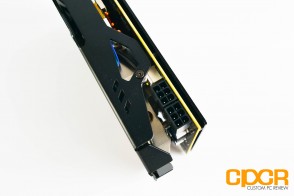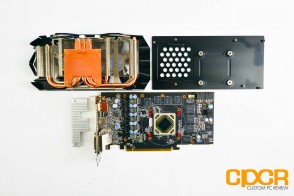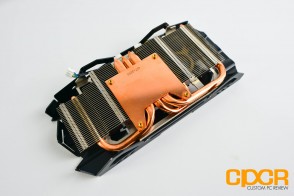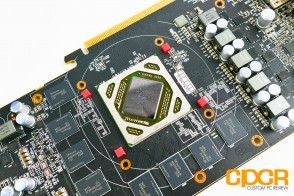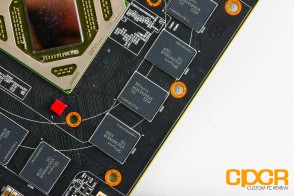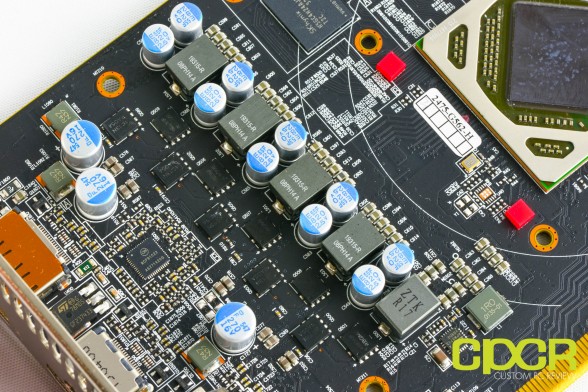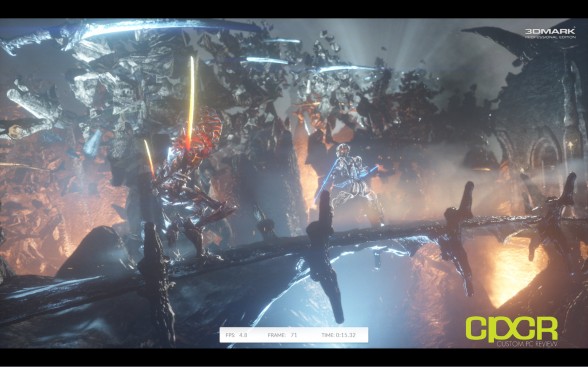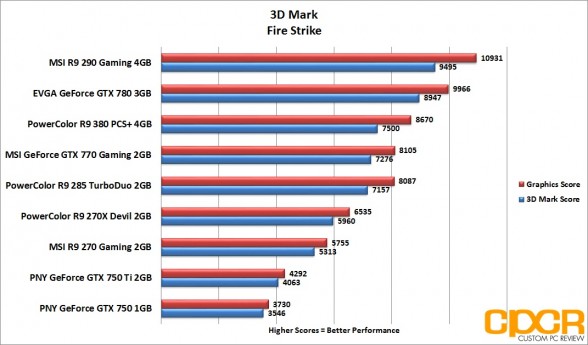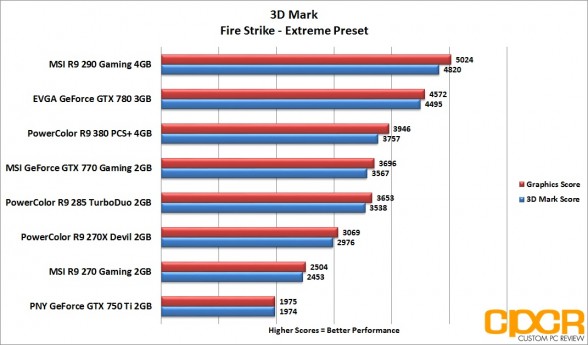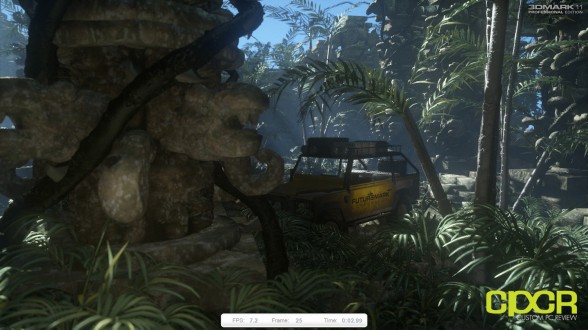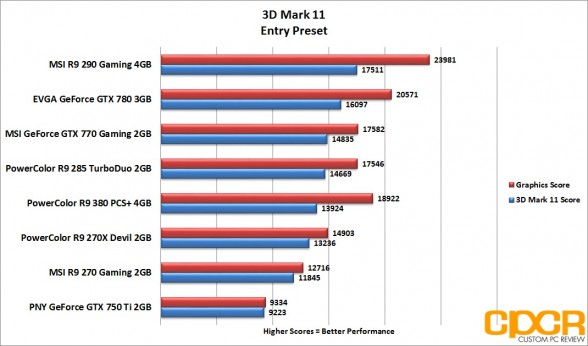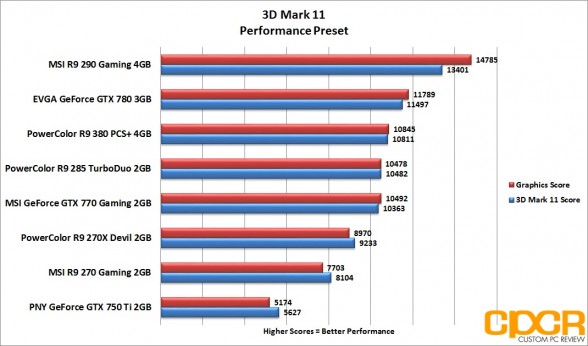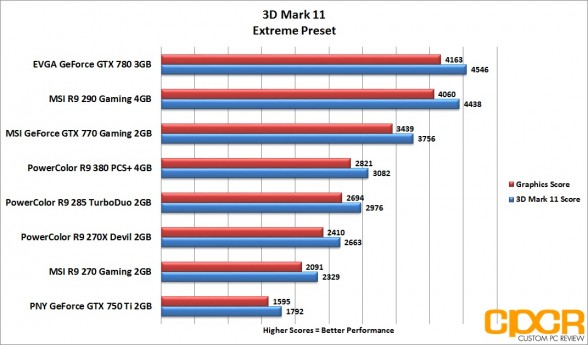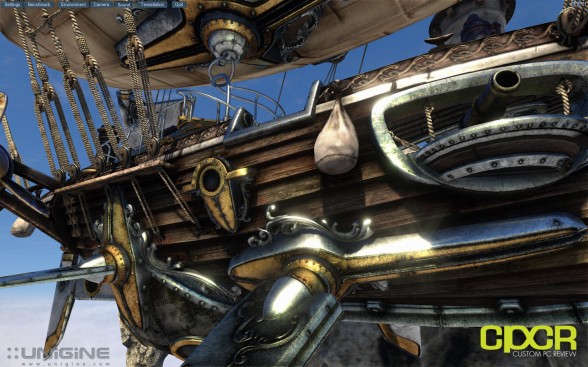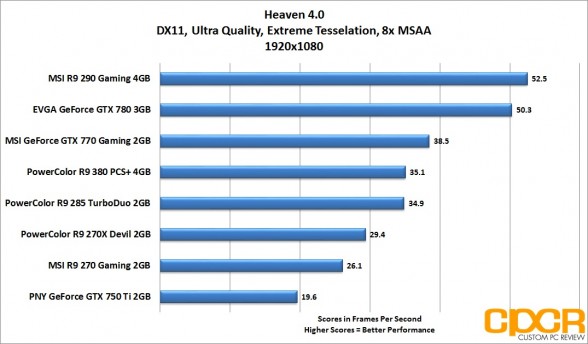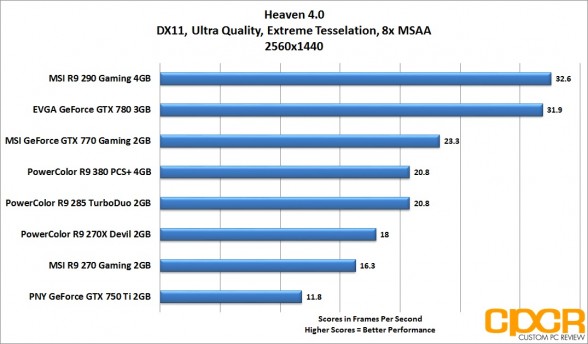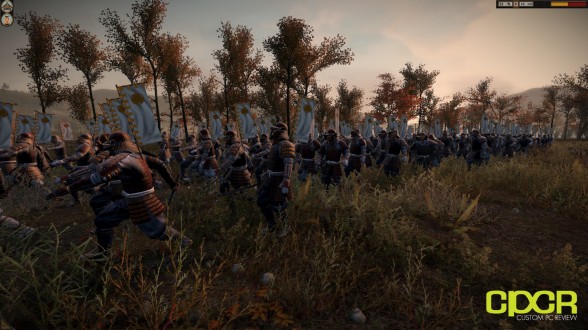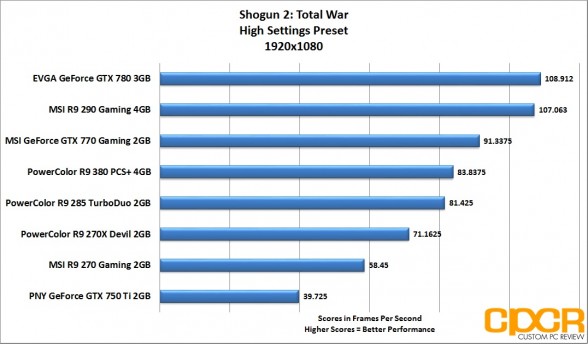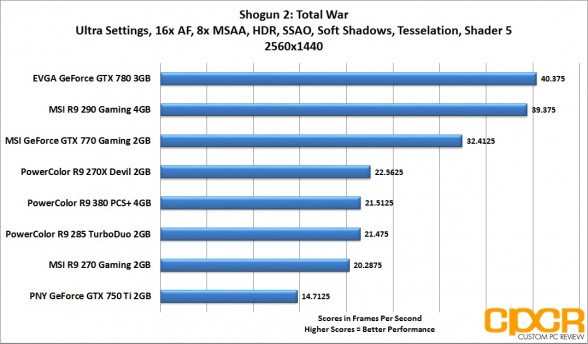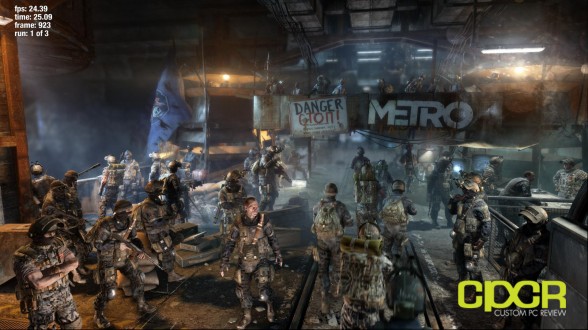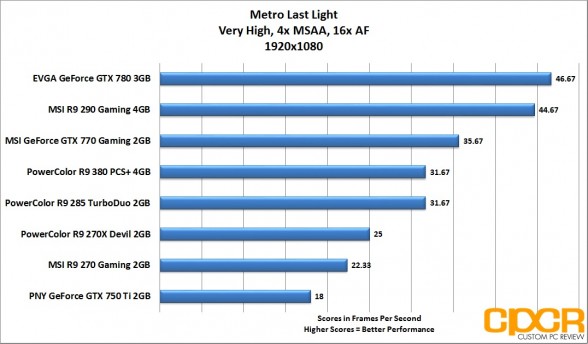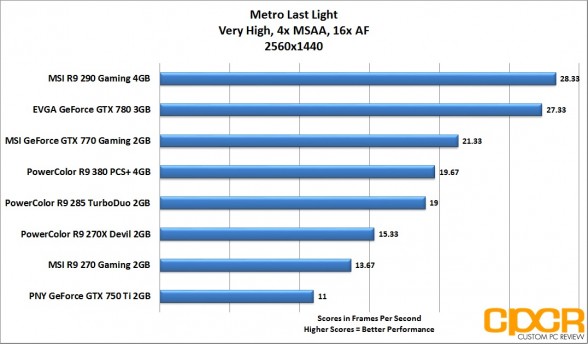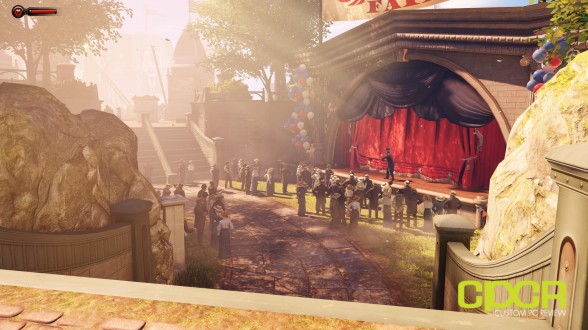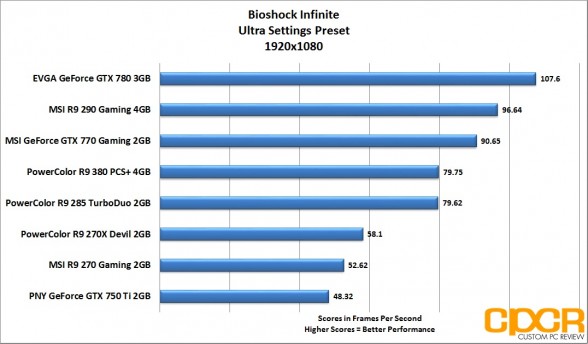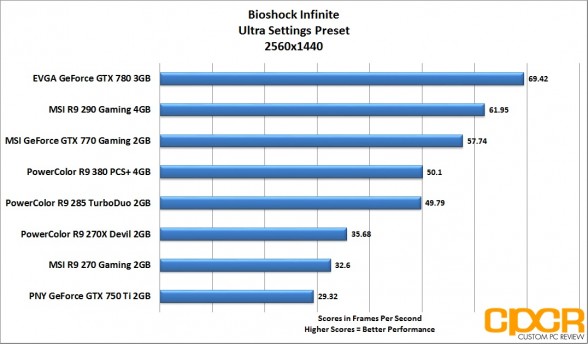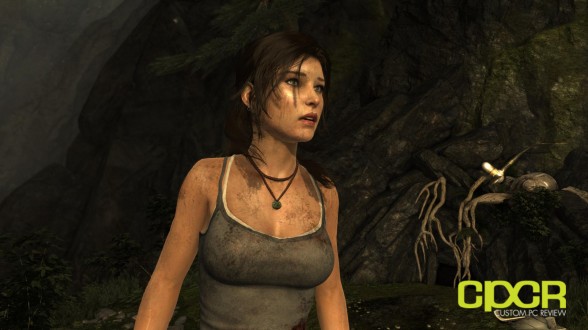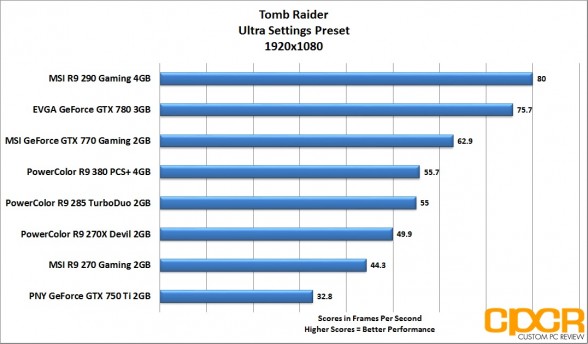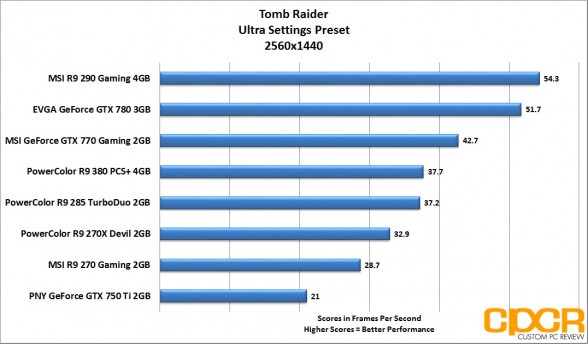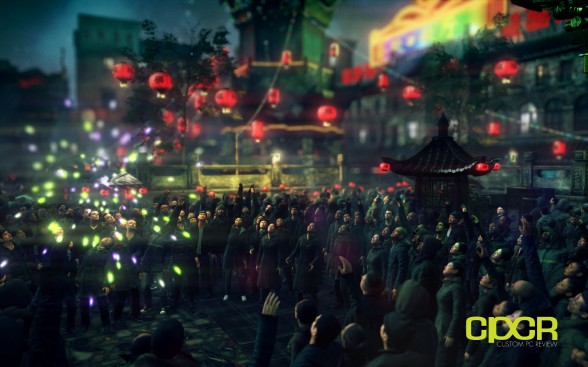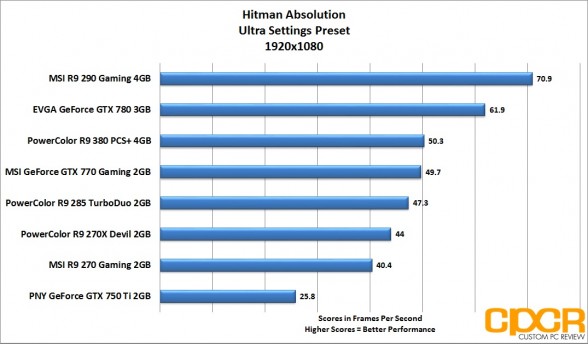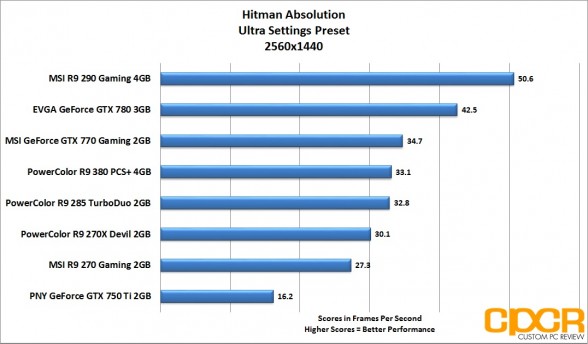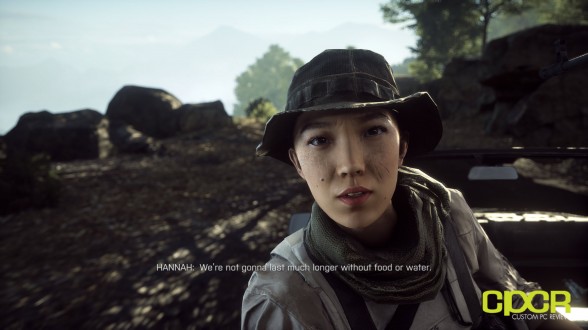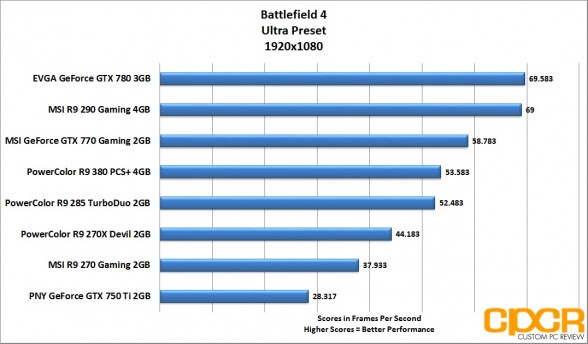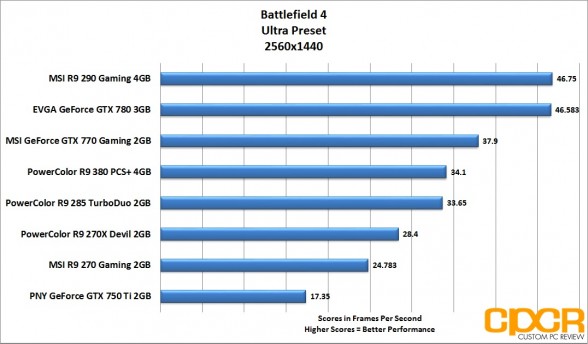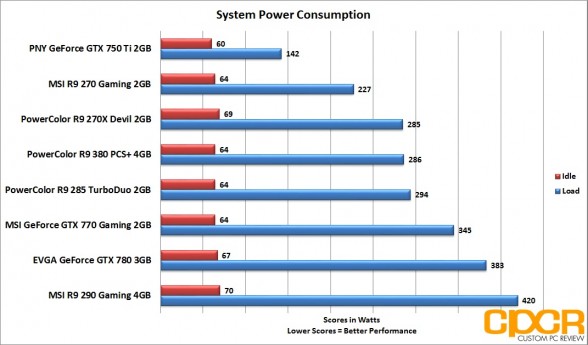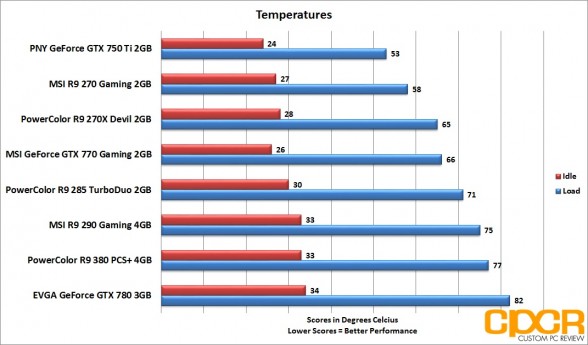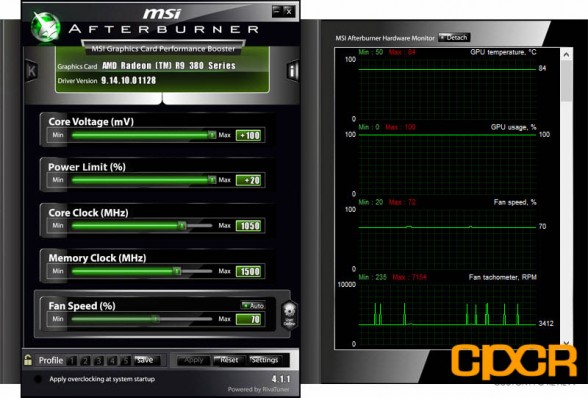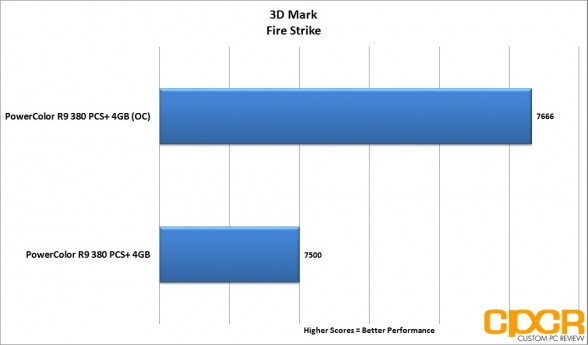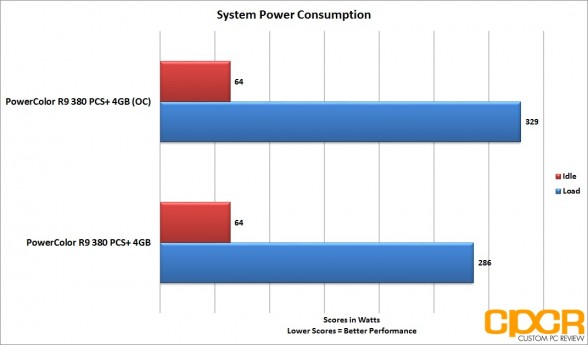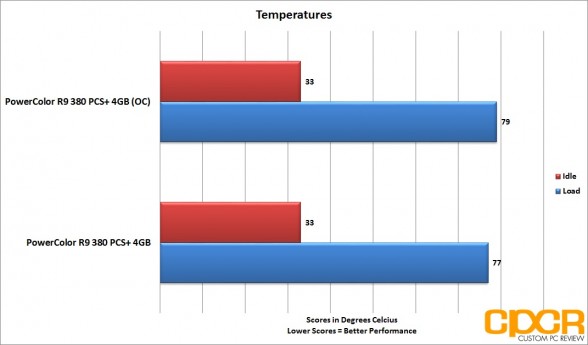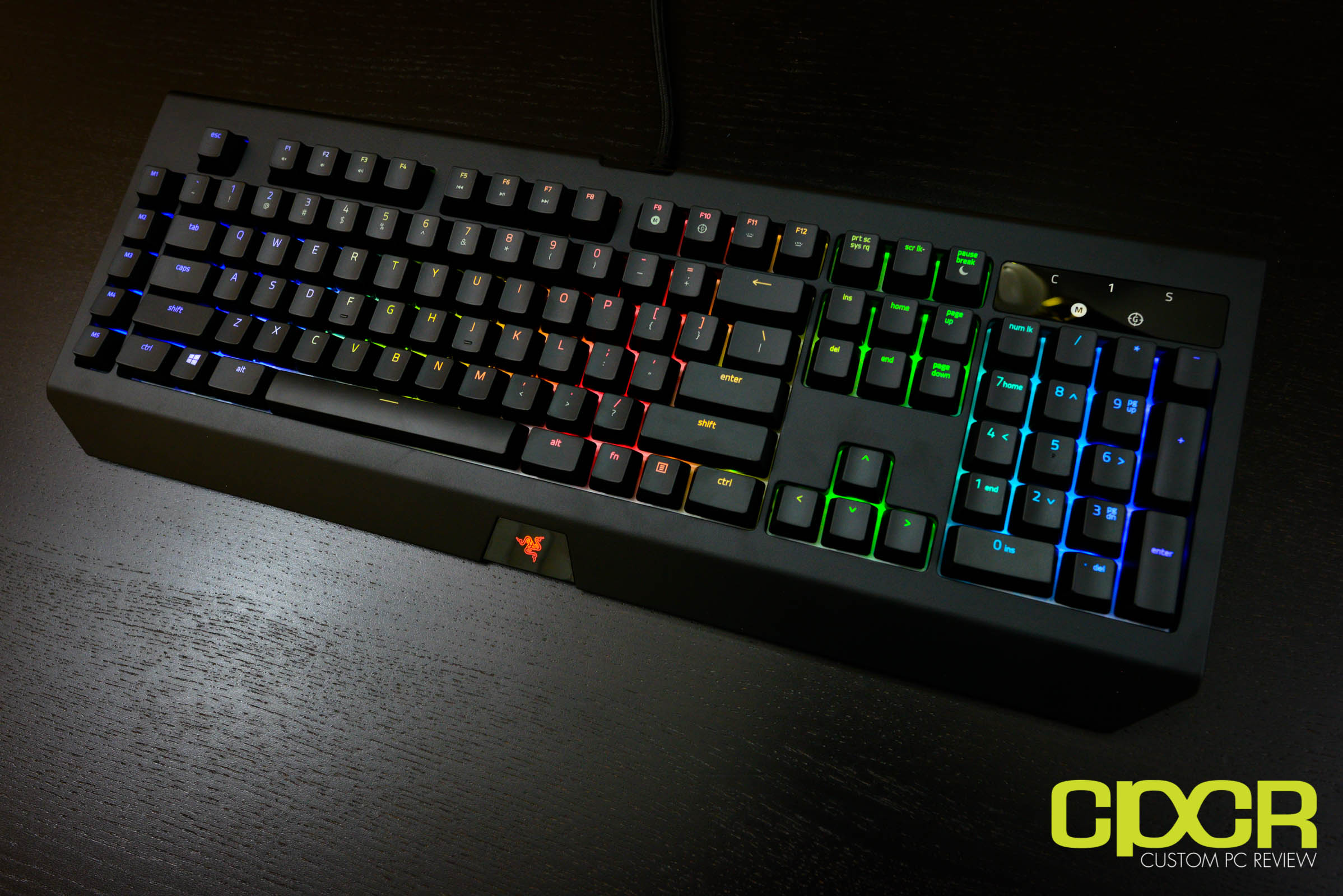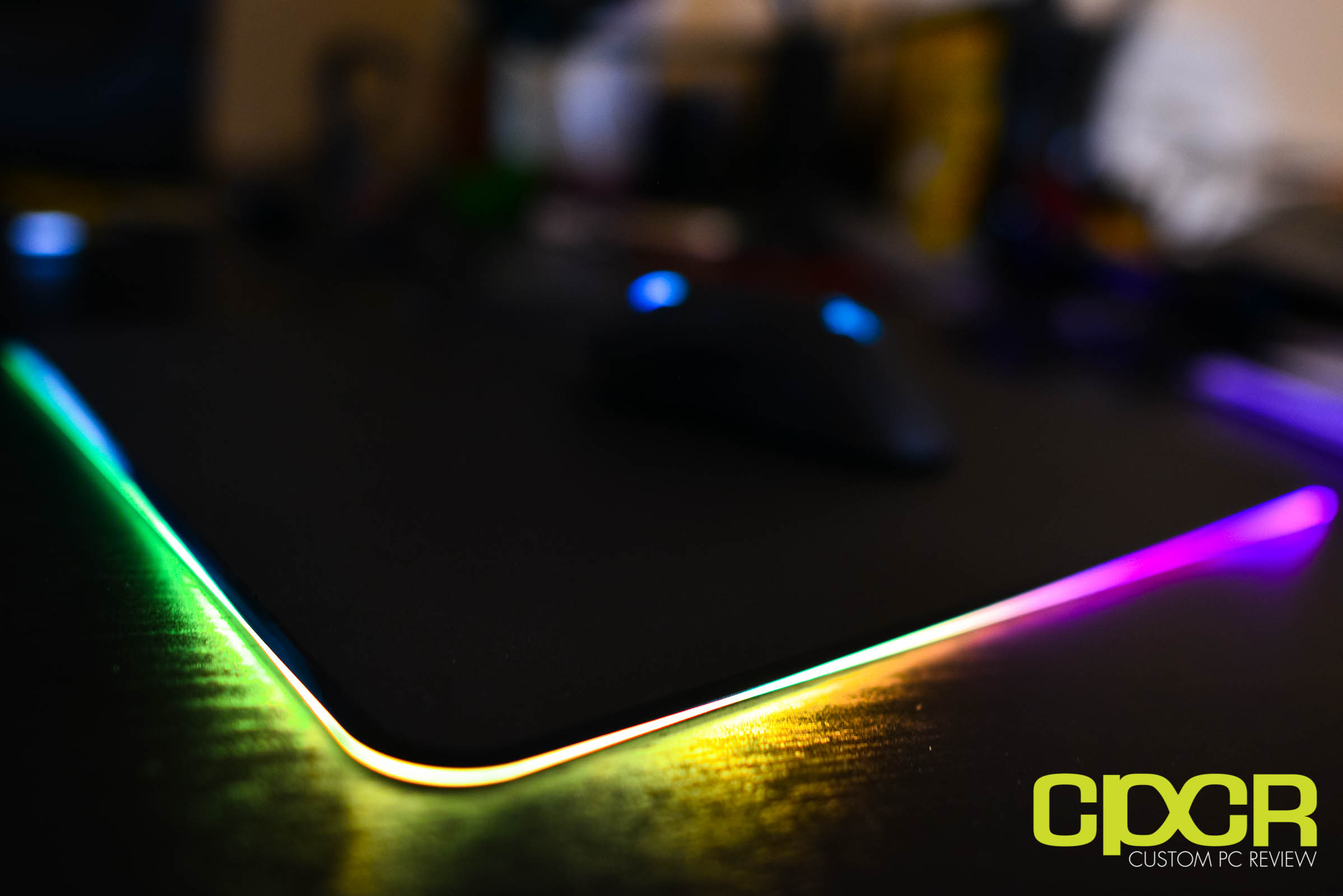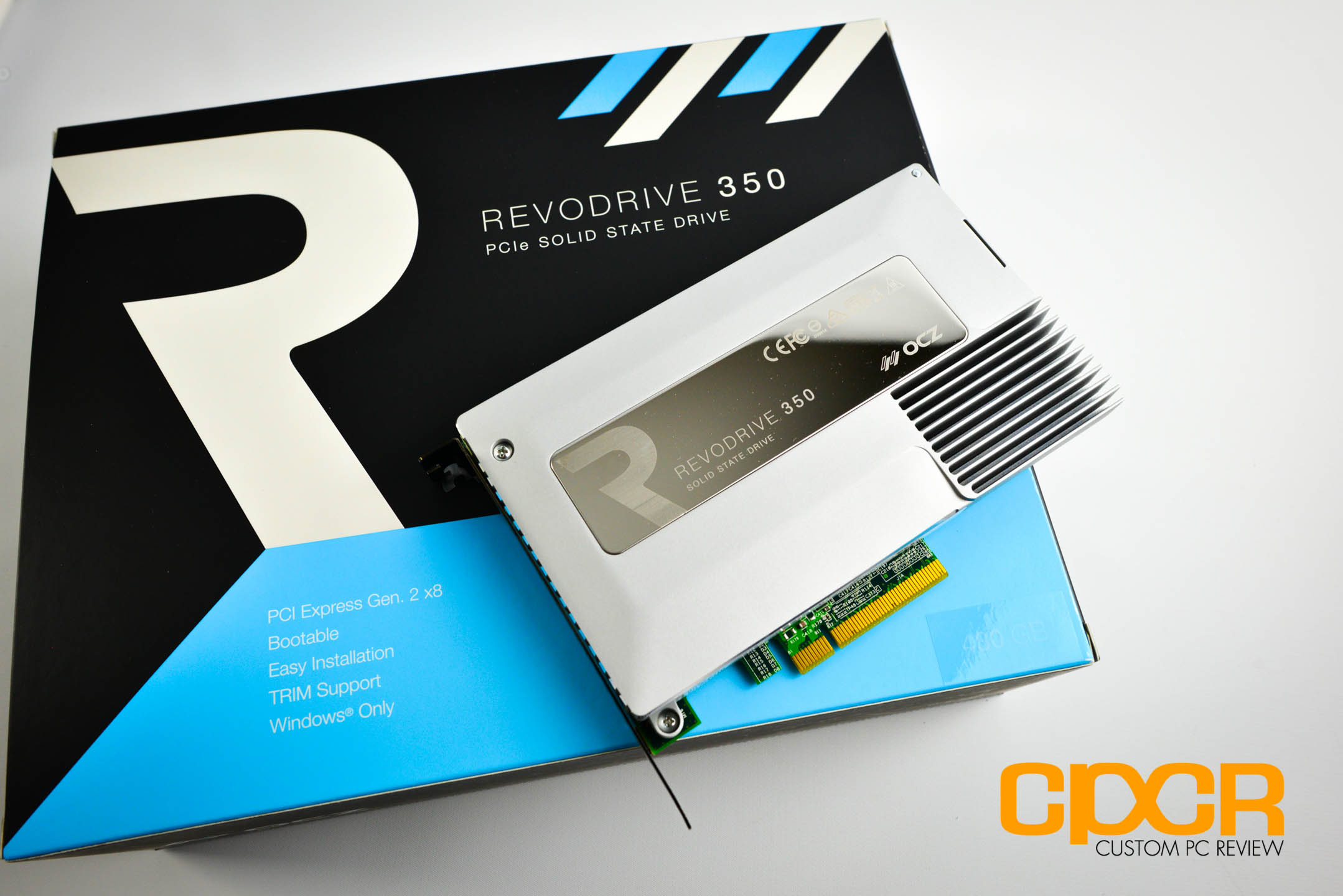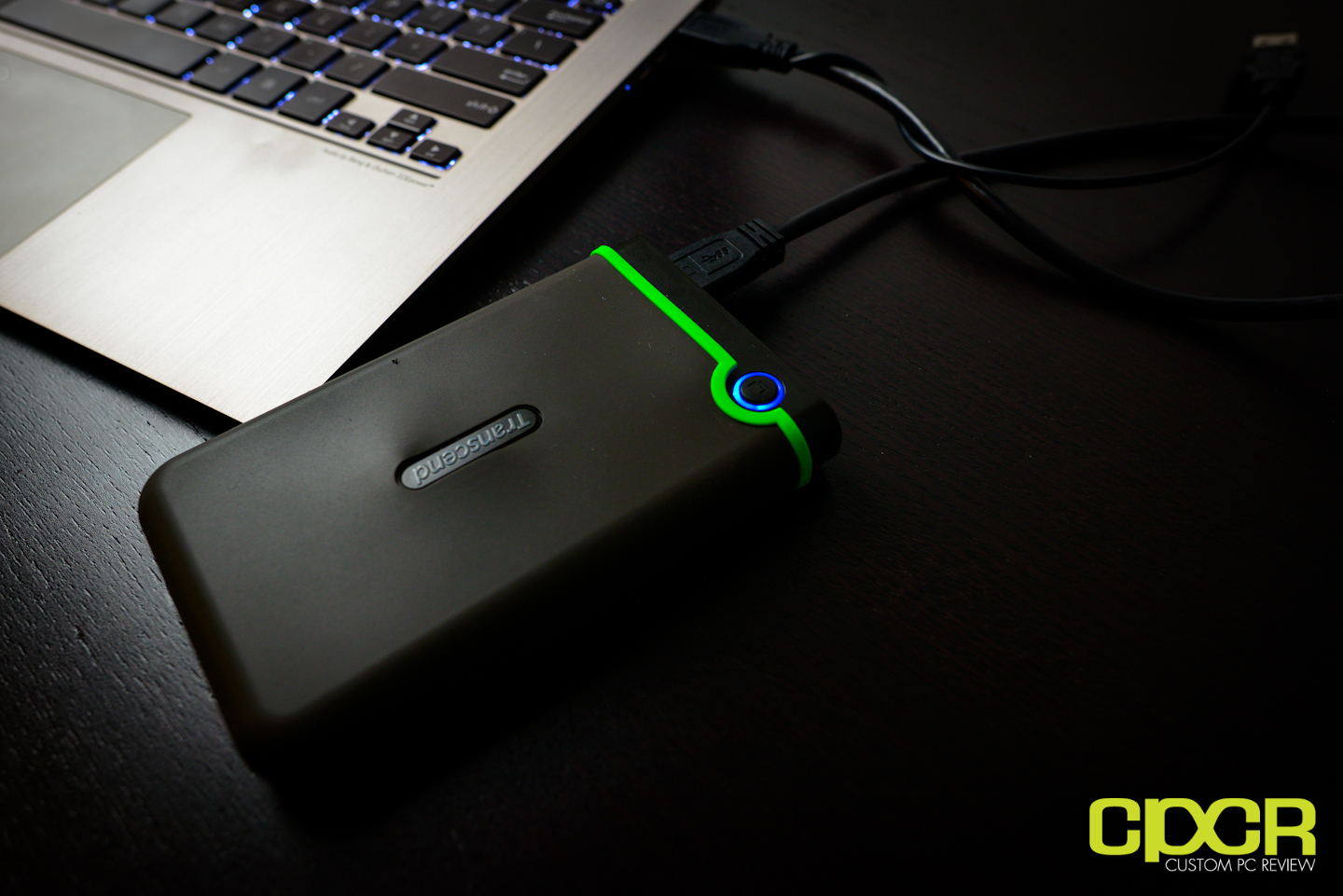[section label=1. Introduction]
Antigua… or was it Tonga?
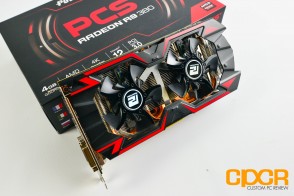 At E3 earlier this year, AMD made a huge splash in the graphics market with their new Fury and Fury X graphics cards. These new graphics cards would be the first on the market to boast the revolutionary new HBM (High Bandwidth Memory) technology which AMD is betting will be the future of graphics memory. Alongside the new Fury and Fury X, AMD also quietly launched the Radeon R9 300 series, but focused very little on the new graphics cards.
At E3 earlier this year, AMD made a huge splash in the graphics market with their new Fury and Fury X graphics cards. These new graphics cards would be the first on the market to boast the revolutionary new HBM (High Bandwidth Memory) technology which AMD is betting will be the future of graphics memory. Alongside the new Fury and Fury X, AMD also quietly launched the Radeon R9 300 series, but focused very little on the new graphics cards.
As it was later revealed, AMD’s upcoming Radeon R9 300 series lineup would pretty much be a re-badge of the Radeon R9 200 series lineup. As such I was honestly a bit disappointed. While I’m not against product re-badging products as it wouldn’t be economically feasible to design new architectures across an entire product lineups every year, what disappoints me is the fact that AMD is still essentially using the same GCN architecture since 2011. While there has been slight improvements to GCN over the years, the underlying architecture is still the same thing we’ve seen since its initial launch.
| GPU | AMD Radeon R9 360 | AMD Radeon R9 370 | AMD Radeon R9 380 | PowerColor R9 380 PCS+ | AMD Radeon R9 390 | AMD Radeon R9 390X |
|---|---|---|---|---|---|---|
| Codename | Tobago (Bonaire) | Trinidad (Pitcairn) | Antigua (Tonga) | Antigua (Tonga) | Grenada (Hawaii) | Grenada (Hawaii) |
| Fabrication | 28nm | 28nm | 28nm | 28nm | 28nm | 28nm |
| Core/Memory Frequency | 1050/1625MHz | 975/1400MHz | 970/1425MHz | 980/1475MHz | 1000/1500MHz | 1000/1500MHz |
| Architecture | GCN 1.1 | GCN 1.0 | GCN 1.2 | GCN 1.2 | GCN 1.1 | GCN 1.1 |
| Stream Processors | 768 | 1024 | 1792 | 1792 | 2560 | 2816 |
| Compute Units | 12 | 16 | 28 | 28 | 40 | 44 |
| Texture Units | 48 | 64 | 112 | 112 | 160 | 176 |
| ROPs | 16 | 32 | 32 | 32 | 32 | 64 |
| Memory Configuration | 2GB GDDR5 | 2 or 4GB GDDR5 | 2 or 4GB GDDR5 | 4GB GDDR5 | 8GB GDDR5 | 8GB GDDR5 |
| Memory Interface | 128-bit | 256-bit | 256-bit | 256-bit | 512-bit | 512-bit |
| Memory Bandwidth | 104GB/s | 179.2GB/s | 182.4GB/s | 182.4GB/s | 384GB/s | 384GB/s |
| TDP | 100W | 110W | 190W | 190W | 275W | 275W |
The AMD Radeon R9 300 series will initially consist of five graphics cards – the Radeon R9 360, R9 370, R9 380, R9 390 and R9 390X. Just like the R9 200 series lineup, each of these cards will feature different iterations of GCN as well. The Radeon R9 380 will feature the newest version of GCN which was launched with the release of Tonga (Radeon R9 285) late last year.
Today we’ll be reviewing the PowerColor Radeon R9 380 PCS+, which is one of PowerColor’s custom implementations of the AMD Radeon R9 380. Looking at the specs, it will be overclocked out of the box and will also include 4GB of GDDR5. As the AMD Radeon R9 380 is essentially a re-badge of the AMD Radeon R9 285, it will also support all the new features of “GCN 1.2”, which includes the new 16-bit floating point and integer instruction set, data parallel processing instructions, improved task scheduling, improved PowerTune, hardware accelerated 4K video encoding/decoding, and more. More information on that can be found in our review of the PowerColor Radeon R9 285 TurboDuo.
Let’s take a closer look!
[section label=2. A Closer Look]
A Closer Look at the PowerColor Radeon R9 380 PCS+
Here’s a look at the packaging for the PowerColor Radeon R9 380 PCS+.
Included in the packaging, we get some documentation, a driver disk and the PowerColor Radeon R9 380 PCS+ itself. Looking at the driver disk, it’s interesting to see that PowerColor somehow still didn’t get the memo that ATI was acquired by AMD almost a decade ago.
Here’s a look at the PowerColor Radeon R9 380 PCS+ itself. We’ve seen this cooler before on the PowerColor Radeon R9 285 TurboDuo, which I’m pretty sure is what the R9 380 PCS+ is based on. Of course, you could be the judge of that (comparison image above). That said, with the PowerColor Radeon R9 380 PCS+, PowerColor has added a nice backplate to the card for better aesthetics and structural integrity.
The cooler is the same as we’ve seen before on the R9 285 TurboDuo. The metal heatsink uses a two 80mm fans which use a special double blade design which PowerColor claims results in 15% reduction in temperatures and 20% increase in air flow. I’m assuming PowerColor is comparing this against the stock Radeon R9 380 cooler.
As for size, the PowerColor Radeon R9 380 PCS+ is a two slot card that’s relatively compact at just under 8.5″ in length.
Video outputs on the PowerColor Radeon R9 380 PCS+ include 2x DVI, HDMI and Displayport. The card utilizes two 6-pin power connectors and has a TDP of 190W.
Removing the cooler, we can take a closer look at its construction as well as the PCB layout on the card. The cooler is essentially the same thing we’ve seen before. The heatsink is constructed of nickel plated aluminum fins, the base is constructed of copper and there’s two 8mm heatpipes and one 6mm heatpipe which pulls heat away from the GPU.
Here’s a closer look at the Radeon R9 380 GPU which is a rebrand of the Radeon R9 285. For the R9 380 PCS+, PowerColor has included 4GB of SK Hynix GDDR5 running on the GPU’s 256-bit memory interface.
Here’s a look at the power delivery system on the PowerColor Radeon R9 380 PCS+. PowerColor is using a 5+1+1 phase power delivery system, PowerPAK SO-8 mosfets, ferrite chokes, and a NCP81022 controller.
[section label=3. Testing Setup]
PowerColor Radeon R9 380 PCS+ Performance
Testing Setup
Haswell Test Bench
| CPU | Intel Core i7 4770K |
|---|---|
| Motherboard | MSI Z97 Gaming 9 AC |
| Memory | Kingston HyperX Genesis 16GB DDR3 2133MHz |
| Graphics | N/A |
| Boot Drive | Corsair Force GS 240GB SSD |
| Storage Drive | Seagate 600 480GB SSD |
| Power Supply | Corsair HX650 |
| Case | HSPC High Speed Tech Station |
| Optical Drive | ASUS OEM DVD Drive |
| Operating System | Windows 8.1 |
Special thanks to CyberPowerPC, MSI, Kingston, Corsair, Seagate and HSPC for sponsoring our test bench!
Initial Boot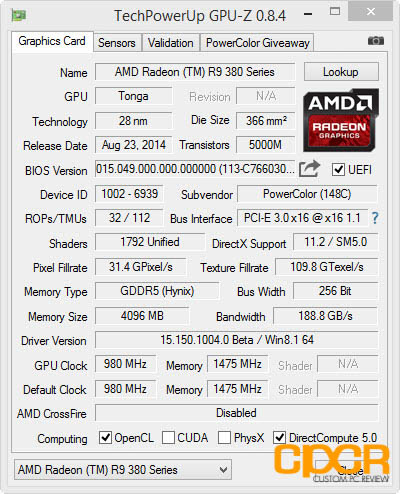
[section label=4. 3D Mark]
PowerColor Radeon R9 380 PCS+ Performance
3D Mark
The new 3D Mark, now referred to as just 3D Mark, is Futuremark’s latest update to the popular 3D Mark series of benchmarks. The updated 3D Mark now includes multiple benchmarks for cross platform support as well as updated graphics to push the latest graphics cards to their limits.
[section label=5. 3D Mark 11]
PowerColor Radeon R9 380 PCS+ Performance
3D Mark 11
3D Mark 11 is an extremely popular benchmark designed by Futuremark for the sole purpose of stress testing a system’s graphics performance. Trusted by hardware enthusiasts and gamers world wide, 3D Mark 11 uses the latest features of DX11 to stress test graphics performance with consistent loads which simulate in game performance.
[section label=6. Unigine Heaven]
PowerColor Radeon R9 380 PCS+ Performance
Unigine Heaven v4.0
Unigine Heaven is another DX11 benchmark that stresses the graphical processing capabilities of the GPU using the advanced UNIGINE engine.
[section label=7. Shogun 2: Total War]
PowerColor Radeon R9 380 PCS+ Performance
Shogun 2: Total War
Shogun 2: Total War is the most recent installment of the long running Total War series. Capable of using DX11’s features, it’s the perfect benchmark to test for the gaming performance. For our testing today, we’ll be using the Shogun 2: Total War benchmark utility.
[section label=8. Metro Last Light]
PowerColor Radeon R9 380 PCS+ Performance
Metro Last Light
Metro 2033 was a staple of our graphics card reviews for some time due to its extremely demanding graphics engine. The game was one of the first to make heavy use of many DX 11 features such as DOF, tessellation and high res textures which brought even the most powerful graphics cards to its knees. Metro Last Light continues that tradition with an even more improved 4A engine further raising the bar on PC graphics.
Today, we’ll be benchmarking Metro Last Light’s D6 scene using Metro Last Light’s included benchmarking utility.
[section label=9. Bioshock Infinite]
PowerColor Radeon R9 380 PCS+ Performance
Bioshock Infinite
The Bioshock series has always been among our favorite games for its amazing story and beautiful visual effects. Released in early 2013, Bioshock Infinite became the third game in the Bioshock franchise and is the first of its kind to take advantage of the PC’s next generation graphics capabilities. Despite being a port, Bioshock Infinite makes full use of DX11 on the PC through its use of a modified version of Unreal Engine 3 supporting high res textures, dynamic shadows, depth of field and ambient occlusion.
Today, we’ll be benchmarking Bioshock Infinite using the Adrenaline’s Action Benchmark Tool.
[section label=10. Tomb Raider]
PowerColor Radeon R9 380 PCS+ Performance
Tomb Raider
When Tomb Raider was first showed off at E3 2012, the game quickly became one of the most highly anticipated games of the year. It had been quite some time since the last Tomb Raider game and given the popularity of the franchise, nobody could really resist a reboot of franchise especially when you’ve got Square Enix and Crystal Dynamics at the helm.
Despite the game ultimately being a multi-platform game, Tomb Raider turned out to be a fantastic port featuring numerous DX11 features such as depth of field, ambient occlusion, tessellation, etc. Even AMD pitched in as well helping developers with their TressFX real-time hair physics engine giving Lara Croft more realistic hair than ever before.
Today, we’ll be benchmarking Tomb Raider using the Adrenaline’s Action Benchmark Tool.
[section label=11. Hitman: Absolution]
PowerColor Radeon R9 380 PCS+ Performance
Hitman: Absolution
Hitman: Absolution is a action adventure game released in late 2012 which focuses on the hitman, Agent 47, and his assassination missions. After a 6 year hiatus, the Hitman series is back in full force with updated graphics based off the developer, Square Enix/IO Interactive’s Glacier 2 engine. The Glacier 2 engine makes heavy use of DX11 features such as tessellation, global illumination, etc.
For our benchmarking today, we’ll be using Adrenaline’s Action Benchmark Tool.
[section label=12. Battlefield 4]
PowerColor Radeon R9 380 PCS+ Performance
Battlefield 4
Only a year after the initial release of Battlefield 3, the team at DICE went back to the drawing board to introduce their latest and greatest modern combat shooter, Battlefield 4. Based off DICE’s all-new Frostbite 3 engine, Battlefield 4 brings a new level of realism to the world of PC and console gaming with an unparalleled level of visual immersion, realistic character animations, and physics driven dynamic environments.
For our benchmarking, we’ll be doing a benchmark on a 60 second run of the game at the beginning of the Tashgar mission. While this scene doesn’t involve any firefights, it’s a very graphics intensive scene that involves a fast moving drive through the hills of Tashgar, which makes heavy use of the Frostbite 3’s motion blurring, depth of field, particle effects, and real time lighting engine.
[section label=13. Power Consumption and Temperatures]
PowerColor Radeon R9 380 PCS+ Performance
Power Consumption
For power consumption testing, we’ll be measuring full system power while idle along with full system power with the graphics card running at full load using Furmark. All power consumption measurements will be measured with the Extech 380801 Power Analyzer.
Temperature Testing
For temperature testing, we’ll be measuring both graphics card temperatures when the graphics card is idle for 5 minutes after a cold boot. Load temperatures are taken after a full 30 minute burn using Furmark.
While some of you aren’t huge fans of Furmark as it creates an ultra heavy, unrealistic load on the graphics card, we feel like it’s a more useful tool as it differentiates between graphics cards that have extremely well designed coolers and ones that simply have cooling solutions that simply pass the test, if you will. Most games these days generally don’t create enough of a load/heat to even exceed temperatures where the fans would spin up on most custom coolers so it’s difficult to adequately rank cooling solutions without using a tool like Furmark.
[section label=14. Overclocking]
PowerColor Radeon R9 380 PCS+ Overclocking
For overclocking, we used MSI Afterburner as PowerColor doesn’t supply their own utility. Unfortunately our card maxed out at 1050MHz core and 1500MHz memory (~6.0GHz effective), which is actually the same thing we saw with the PowerColor Radeon R9 285 TurboDuo we reviewed previously. While this is a decent 7% increase in core clock speeds, it’s only a paltry 1% increase in memory clocks. That being said, AMD did increase the reference Radeon R9 380 to 970MHz core and 1425MHz memory which does push the card much closer to its limits.
3D Mark Performance – Fire Strike
Power Consumption
Temperatures
[section label=15. Conclusion]
PowerColor Radeon R9 380 PCS+ Conclusions
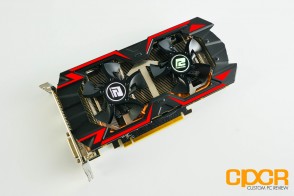 Alright, so with testing out of the way let’s talk briefly on the PowerColor Radeon R9 380 PCS+.
Alright, so with testing out of the way let’s talk briefly on the PowerColor Radeon R9 380 PCS+.
Performance on the PowerColor Radeon R9 380 PCS+ was essentially the same as we saw on the PowerColor Radeon R9 285 TurboDuo. There’s very little difference that we saw in all of the benchmarks although the PowerColor Radeon R9 380 PCS+ was slightly faster than the PowerColor Radeon R9 285 in most benchmark. Mostly because it has a higher overclock out of the box. Of course there’s also the additional 2GB of vRAM which I don’t think ended up doing very much. This card was originally designed to play games at the more mainstream resolutions of 1080p and 1440p, which doesn’t require much more than 2GB of vRAM.
As for the design of the PowerColor Radeon R9 380 PCS+, it’s pretty much what we’ve seen before. PowerColor is still using that red/black colored metal shroud which is nice compared to all the plastic shrouds we see in the marketplace. PowerColor has also added a nice backplate as well which should help improve the structural rigidity of the card. That being said, I’m not much of a big fan of PowerColor’s 80mm double bladed fans. While it’s probably one of the better 80mm fan designs out there, I wish they went with bigger fans that push more air with less noise.
Despite using a slightly different power delivery system and very different vRAM, overclocking on this card was strangely enough exactly the same as we’ve seen before from the Radeon R9 285 TurboDuo card. We were able to achieve slightly higher clock speeds with the R9 380 PCS+, but just like the R9 285 TurboDuo, once we cranked the frequencies higher than 1050/1500 core/memory, we saw quite a bit of artifacting.
The PowerColor Radeon R9 380 PCS+ 4GB is currently available at various online retailers for $219.99. While this is a fair price, it’s in competition with both the R9 285 and the R9 380 2GB, which performs more or less the same. The only difference is that there are quite a few good deals to be had on the R9 285 these days and the R9 380 2GB is generally ~$10-$20 cheaper no matter what brand you go with.
Overall the PowerColor Radeon R9 380 PCS+ is still a good card for the mainstream market looking to play the latest games at the more mainstream 1080p or 1440p resolutions. Personally I’d probably recommend going with the cheaper 2GB card or even a Radeon R9 285 if you’re playing games at 1080p or 1440p, but if you can find one on discount I wouldn’t hesitate to pick one up.
Sample provided by: PowerColor
Available at: Newegg

